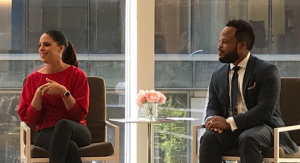A citywide campaign to promote volunteerism and mentoring among men of color
The Center for Nonprofit Advancement and Serve DC will partner again to implement Volunteer Generation Fund 2019 and build on the success of last year's VGF 2018. The program supports the initiative My Brother's Keeper DC—Strengthening Our Community, with the goal of increasing the number of volunteer men of color working with nonprofit organizations in the District.
Through a transparent and competitive process, five (5) Washington, DC nonprofit organizations that work with boys and young men of color will be selected to participate in the Volunteer Generation Fund. Selected organizations will receive three forms of assistance:
- One-on-one technical assistance to improve the organization's volunteer management capacity, ultimately resulting in the creation of a project plan
- Volunteer management training for staff and their lead volunteers
- One-time grants of $10,000 to each selected organization for planning, building and launching unique volunteer recruitment campaigns for individuals that meet their predetermined organization short and long-term needs
The application is open to any 501(c)(3) nonprofit organization—regardless of budget size or scope of programming—based in Washington, DC. (See eligibility details below.)
Participation in the VGF program is an eight (8) month commitment (see Program Session Dates below). Selected organizations will participate in ongoing consulting, training sessions and evaluations. By the end of the fiscal year, they will be responsible for • development of volunteer descriptions • assessment of the number of volunteers hours needed • tracking how many volunteers they are able to recruit and retain • tracking the number of hours of the volunteers and • evaluating the effectiveness of their recruitment campaign.
**Application Deadline has been EXTENDED to
5pm on Wednesday, January 16, 2019**
Apply online or download the Application and submit in person or by mail.
Notifications of awards will be January 31, 2019.
For more information, see below. Or download the Full Application Packet.
Through a transparent and competitive process, five (5) Washington, DC nonprofit organizations that work with boys and young men of color will be selected to participate in the Volunteer Generation Fund.
The application is open to any 501(c)(3) nonprofit organization—regardless of budget size or scope of programming—based in Washington, DC. Applications are welcome from both long-established as well as new organizations. If the applicant represents separate organizations that have merged, the newly merged organization must have been in operation for one (1) complete fiscal year.
The process incorporates an application and review panel. The selection committee is an all-volunteer committee recruited by the Center for Nonprofit Advancement. Every effort is made to protect the integrity of the process, adhering to best practices and high ethical standards, such as monitoring confidentiality and conflicts of interest.
- Development of volunteer descriptions
- Assessment of the number of volunteers hours needed
- Tracking how many volunteers they are able to recruit and retain
- Tracking the number of hours of the volunteers, and
- Evaluating the effectiveness of their recruitment campaign
(Session focus subject to change):
February 4 Orientation/Kick Off Meeting
March 9 Session 1: Volunteer Needs Assessment
April 6 Session 2: Volunteer Recruitment
May 4 Session 3: Volunteer Training
June 1 Session 4: Volunteer On-boarding and Organizational Cultural
Competency
July 13 Session 5: Volunteer Monitoring/Surveying
August 17 Session 6: Volunteer Retention
September 14 Session 7: Closing and Program Review
An application can be submitted online, by mail or in person.
In formulating responses, applicants should bear in mind that this opportunity focuses on volunteerism, management and capacity—not programmatic implementation. Only one application per organization will be accepted. Please do not send books, videotapes, manuscripts or other unrequested materials. These will not be reviewed nor returned.
To apply online, it's suggested to download the VGF Application first, so responses can be formulated offline and then pasted into the online application. The supporting documents must be uploaded with the application and submitted by 4pm on Monday, January 14, 2019.
Applications can also be submitted by mail or in person at the address below (but must still be received by the deadline of 4pm on Monday, January 14):
Center for Nonprofit Advancement
ATTN: Taylor Strange
1666 K Street, NW, Suite 440
Washington, DC 20006
The selection committee will choose five organizations after a review of all applications. The evaluation will consider organizational capacity, volunteer management capability, and the ability to sustain these efforts into the future. The grantees will be announced by Thursday, January 31, 2019.
Do all volunteers have to provide direct service work to the program or can they also assist with the business operations of the organization?
For the purposes of this opportunity recruited volunteers should work directly with the boys and young men served by your organization.
What is the Clean Hands Form?
The Clean Hands form provides evidence that your organization does not have any outstanding tax debts to the District of Columbia. For the purposes of this application, Clean Hands forms have to be from 2018.
If an organization was previously selected for the Volunteer Generation Fund can they re-apply?
If an organization was selected in a previous cycle of the Volunteer Generation Fund they are NOT eligible to be selected again?
Still have questions? Contact Taylor Strange.
 With budget constraints tighter than ever, you may be thinking how can your nonprofit possibly afford to offer paid (or even unpaid) sabbaticals? But in today’s climate, the real question is how can you afford not to?
With budget constraints tighter than ever, you may be thinking how can your nonprofit possibly afford to offer paid (or even unpaid) sabbaticals? But in today’s climate, the real question is how can you afford not to? Those who attended this year’s sold out event were especially impressed with our featured guest, Soledad O’Brien.
Those who attended this year’s sold out event were especially impressed with our featured guest, Soledad O’Brien.